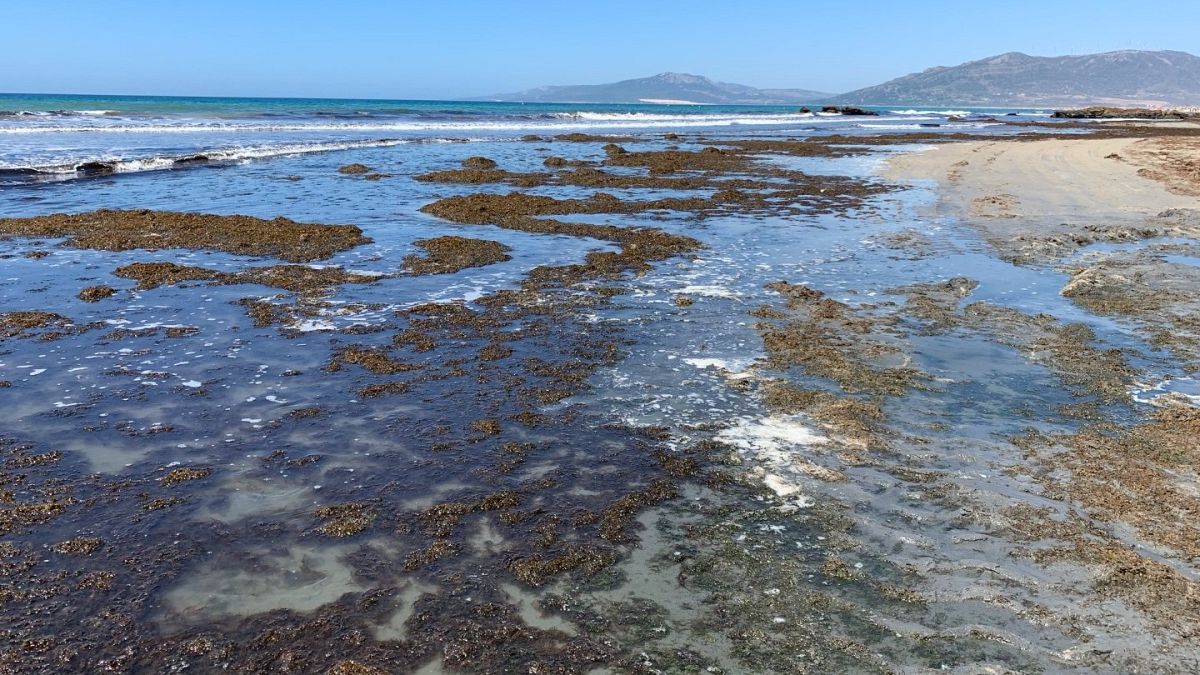

In recent times, our planet has been facing a series of environmental challenges that are leaving a significant impact on ecosystems worldwide. From the invasion of non-native species and extreme weather conditions to innovative approaches for wildlife protection, each event reflects the intricate balance our environment maintains. This article delves into these phenomena, exploring both the disruptions and the efforts being made to safeguard our natural world.
On the southern coast of Spain, the accumulation of thousands of tonnes of ‘Rugulopteryx okamurae,’ an invasive seaweed species from Southeast Asia, is posing a significant threat to local biodiversity. This seaweed blooms along the beaches of the Strait of Gibraltar, raising concerns among ecologists over its potential to disrupt native marine ecosystems. As this unwelcome guest proliferates, it underscores the challenges coastal ecosystems face from non-native species, which can outcompete local flora and fauna for resources.
Meanwhile, a broader environmental shift is being observed globally, as scientists warn that prolonged marine heatwaves may have driven the world’s oceans to a critical tipping point. This prolonged state of warmer waters, now feared to be the ‘new normal,’ could have profound effects on marine life and weather patterns. The shift highlights the urgent need for greater understanding and action to address oceanic warming and its cascading effects on global ecosystems.
Across Europe, varied weather patterns are emerging, contributing to diverse regional environmental challenges. In Northern Europe, countries like Sweden and Norway are grappling with extreme heatwaves, while parts of Germany are experiencing persistent rain reminiscent of autumn. These weather extremes are becoming increasingly familiar, prompting discussions on climate change adaptability and resilience.
In a heartening turn of events, Amsterdam is embarking on a thoughtful initiative to protect its local wildlife. The city is installing hundreds of mini staircases along its famous canals, a project championed by local councillors who have allocated €100,000 for this endeavor. These staircases aim to provide safe passages for animals, enabling them to navigate the canals with ease and reduce the risk of drowning. This project serves as an inspiring example of innovative urban planning that prioritizes the welfare of city-dwelling wildlife.
In contrast, China faces a more severe challenge with heavy rains bringing floods to its northern regions, including the capital, Beijing. The deluge has resulted in tragic losses of life and has displaced thousands as authorities issue warnings of potential natural disasters such as landslides. The record-breaking rainfall in areas like Fuping county underscores the vulnerability of human settlements to evolving climate conditions and highlights the critical need for robust emergency and infrastructure response systems.
Meanwhile, in Greece, a different climate-induced phenomenon is taking its toll as wildfires rage across the nation. With flames consuming parts of the Peloponnese and the islands of Evia and Kythera, the situation has prompted Greece to seek assistance from European allies. Czech firefighters and Italian aircraft are actively joining efforts to combat the blaze, demonstrating the power of international cooperation in the face of shared environmental threats.
These diverse scenarios reflect the complexity and interconnectedness of global environmental issues, demanding both local and international responses. While challenges abound, the adaptation and mitigation strategies being implemented—whether through ecological preservation, international aid, or innovative design—offer a sense of hope and progress. They remind us of the importance of unified efforts to protect our environment, ensuring a harmonious relationship between humanity and nature.
Source: {link}
